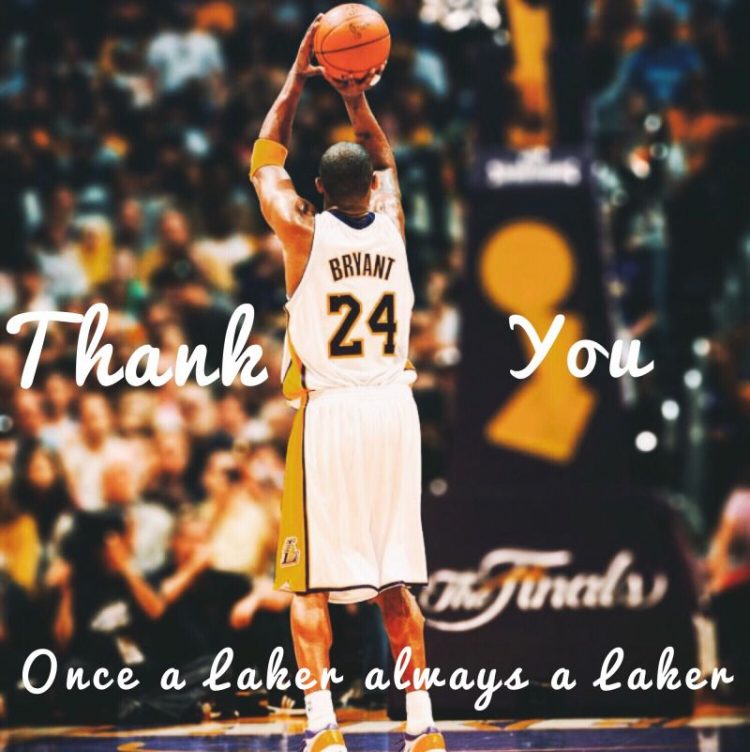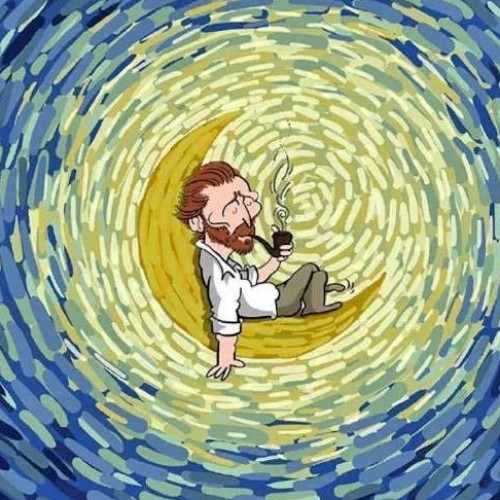虎扑体育网
 搜我想看
搜我想看打开APP
(26日17:00前)LeBron and Kobe: A bond forged by death and a black jersey to link them forever?
They were actually in the Lakers’ rotation for a season before he signed in L.A., but they didn’t wear them at all last season. For reasons you could probably gather, they have an entirely new meaning now.
Did you know the first time James was handed a black jersey with yellow trim, he hated it?
It was Nov. 4, 2015, a home game in Cleveland against Carmelo Anthony and the Knicks. The jersey was the NBA’s special T-shirt version — the Cavs chose to make theirs black — and LeBron thought the sleeves were restrictive. He shot 4-of-11 in the first half that night and blew a gasket, tearing both sleeves in the second quarter.
So it was somewhere between a mild surprise and a shocker when those Cavs re-emerged for Game 5 of the NBA Finals that summer again in all black and gold, with the sleeves, trailing the Warriors 3-1 in the series.
The audacity of going with the all-black after having dug such a deep hole, in a T-shirt LeBron had made clear he didn’t like. Well, the sleeves were loosened this time, and he unleashed hell on the Warriors, leading Cleveland to a never-before-seen Finals comeback, capped by a Game 7 thriller.
It was likely the single finest moment of James’ career (aided, of course, by his chase-down block of Andre Iguodala). He won a championship for his hometown in those specific circumstances against the 73-win Warriors. Wearing those jerseys.
LeBron plays for the Lakers now. He and the rest of his teammates were again wearing all-black uniforms with gold trim (no sleeves, though) against Anthony and the Portland Trail Blazers in a completely separate, but even more unfathomable situation. It was “Mamba Day” on Monday in the NBA bubble at Disney World, on 8-24, because Kobe Bryant, a.k.a “Black Mamba,” died tragically in January and he wore those two numbers during his 20 years with the Lakers.
In the “Mamba” jerseys, the Lakers effectively ripped the Blazers’ hearts out. A 135-115 blowout put the Lakers up 3-1 in the series, and while they have been steadily improving throughout this series, the Lakers had never looked as formidable of a threat in the bubble as they did Monday night.
My, oh my. LeBron, let’s see, 30 points on 10-of-12 shooting, with 10 assists, in 28 minutes? Anthony Davis, 18 points in 18 minutes? The Lakers said he was out of the game for good with back spasms. Damian Lillard, smothered again by the stingy Lakers defense, limited to just 11 points on 3-of-9 shooting. The Blazers said he didn’t return because of a right knee injury.
The injuries will be sorted out in the hours and minutes leading up to Game 5. But look, the Lakers have won three straight in this series and were ahead Monday by as many as 38. With 4:58 left in the first, the Lakers were up 24-8. How’s that for poetry on Mamba Day? The Blazers’ Jusuf Nurkic finally had a good game in this series (20 points, 13 rebounds), but it hardly mattered.
On a night like this, it was easy to envision the Lakers putting on those jerseys again, in a tight series late in the playoffs, maybe in the Finals, maybe trailing their opponent in the series, and using the magic in the jerseys for a miraculous comeback. If it happens, it will mark another in the suddenly voluminous number of ways LeBron and Kobe would be linked — James leading the Lakers to a title, in the strangest of seasons, wearing jerseys that memorialize the Lakers icon.
James and Byrant were not really friends, nor were they rivals. Kobe ruled the league when LeBron made his debut in 2003, and their relationship was either icy, or non-existent. They never met in a Finals. They were teammates for Team USA at the Olympics, but any thawing between them came in the 2016 season, Bryant’s last, when the league celebrated him and he turned himself into a mentor for the game’s greats and for its up and comers.
When James signed with the Lakers two summers later, an awkward dichotomy existed within the organization and the city. LeBron became the team’s incumbent star, but he was an outsider. The Kobe loyalists were (and are to this day) everywhere, from his former agent and best friend-turned Lakers general manager Rob Pelinka, on down.
Were LeBron and Kobe friendly? Sure. But it was more of a co-existing between them, with Bryant perhaps forever as superstar and face of the franchise emeritus and James trying to forge his own history in a championship-rich organization toward the end of his own career.
On Jan. 26, James passed Bryant for third on the all-time scoring list. It happened in Philadelphia, which was where Bryant grew up. He didn’t attend the game, but Bryant called LeBron after the game and they had a warm exchange.
That’s all it should have been, a really nice moment between them and for the Lakers before they moved on with the grind of the season and Kobe got back to his comfortable, promising and fruitful life in retirement.
But instead, the next morning the helicopter he was riding crashed, killing him, his daughter Gigi, and seven others. The meaning of it all, to this day, on the Lakers, their fans, the NBA, and on popular culture, cannot quite be measured.
But Bryant’s death is what tied them together. James, as the face of the NBA and leader of a team absolutely devastated by his death, had to put an entire organization on his shoulders. He had to address the mourning Staples Center crowd the night the Lakers returned to play, and he dedicated what was already supposed to be a championship run for the Lakers to the memory of their fallen icon.
If LeBron’s relationship with Kobe was spotty, or friendly but casual in life, it has certainly strengthened since Bryant’s death. There was no other choice.
LeBron’s best friend on the Lakers, Davis, was among the many young stars throughout the league who had a real bond with Bryant. The two of them — Davis and James — got tattoos on their thighs to honor Bryant after he died.
Another player who was close with Kobe was Portland star Damian Lillard, who on Monday wrote “8” and “24” on his sneakers. Another, Houston’s Russell Westbrook, wore a Bryant jersey on the Rockets’ bench during their loss to Oklahoma City on Monday.
The Blazers were the first team to visit Staples Center after Bryant’s death for a game on Jan. 31. Lakers players described the night as a funeral that left them emotionally drained and numb.
It was a game Portland had to have, and the Blazers took it, 127-119. With the win, the Blazers improved to 22-27 and were trying to climb back into the playoff race. Lillard scored 48 points.
“I think it was a difficult night for everybody,” Blazers coach Terry Stotts said Monday. “Carmelo didn’t play, he didn’t make the trip because it was difficult for him, so many players who were big admirers of Kobe. And just the feeling in the arena.”
The Lakers have spoken so much about Bryant, his death and what he meant to them, that they’d prefer to continue the grieving process in private. Feelings are still raw. Heading into the weekend (Bryant’s birthday was Sunday), the Lakers were tight-lipped about how they intended to commemorate the day.
Before Game 4, Lakers coach Frank Vogel was a little looser than he’d been on the subject. He said: “Kobe made it cool as hell to be a Laker for 20 years and he just had that swag about him and with this team, he embodied this organization. He’s the greatest Laker of all time.”
Long before James ever signed with the Lakers, he told people close to him he thought it would be “cool” to play for the Lakers one day.
Wearing those black jerseys with the gold trim Monday night, LeBron and the Lakers looked striking. Intimidating. And cool.
Like Kobe before them. Imagine, then, if the Lakers needed those jerseys in Game 7 of the Finals. After all that’s happened. With Bryant’s spirit, sitting on their shoulders. It’d be right up there with the best of LeBron’s finest NBA moments.
In a black jersey. With the gold trim.
发布于北京阅读 909
全部回复

asjkfj楼主
翻译作品链接: (翻译完了记得填!!!) 招工链接: https://bbs.hupu.com/37476482.html原文标题: LeBron and Kobe: A bond forged by death and a black jersey to link them forever?原文作者: Joe Vardon发表时间: 8.25原文链接: https://theathletic.com/2020906/2020/08/25/lebron-lakers-pay-tribute-to-kobe-in-a-way-only-the-black-mamba-would-love/分级:1级

